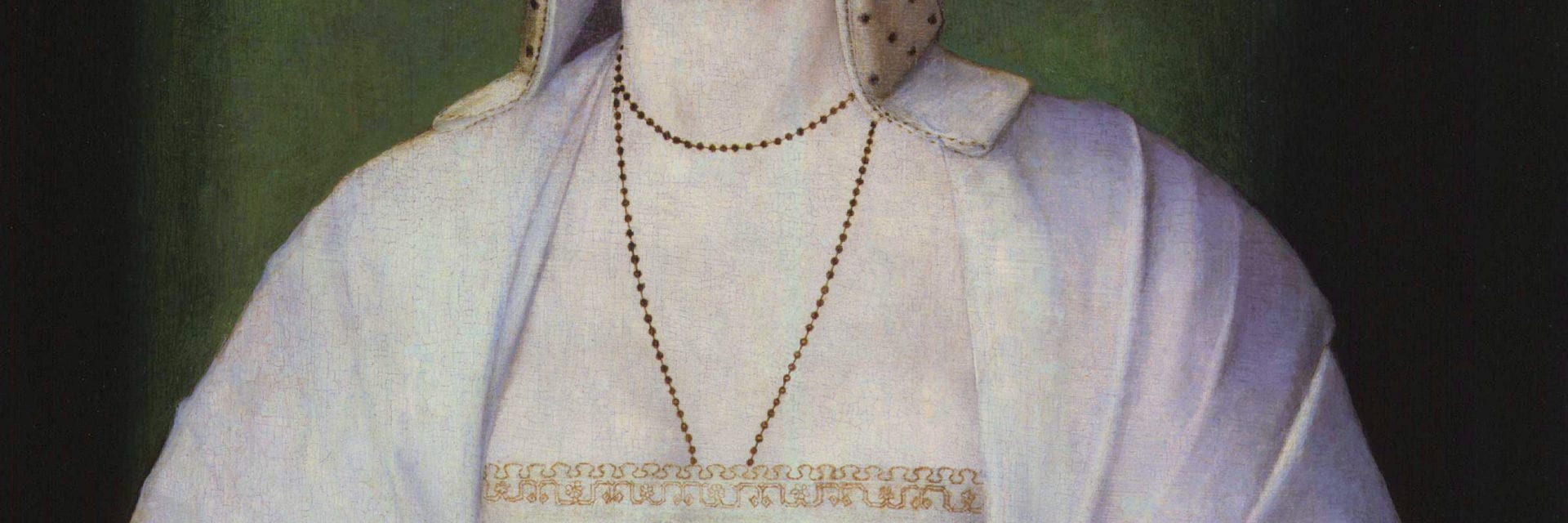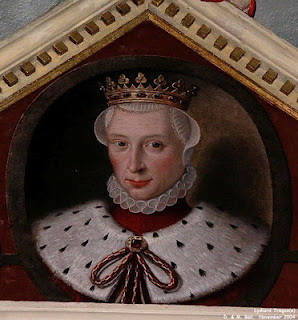

On this day in 1541 Margaret Pole, 8th Countess of Salisbury was beheaded at the Tower of London. She was 67 years old and had already served two years imprisonment in the London fortress. She had arrived there another victim of Thomas Cromwell, but ironically he met his death before she faced hers.
Margaret was everything Henry VIII feared most. As the last Plantagenet she was more royal than he. She was cousin to his mother Elizabeth of York; she was wealthy, powerful and a staunch supporter of the Princess Mary, having served as a Lady in Waiting to Catherine of Aragon.
Although all of these factors were troubling, Henry could probably have turned a blind eye, until Margaret’s son Cardinal Reginald Pole started mouthing off.
From the safety of Padua, Reginald spoke out against the annulment of the King’s first marriage, then he waded in criticising Henry’s policies to reform the church in England. At that point Henry could no longer ignore the Pole problem.
Cromwell issued a Bill of Attainder against Margaret and despite a plea to her son to put a sock in it, she was whisked off to the Tower.
The poor lady’s execution was truly awful. Arranged in haste, the official executioner could not be found and an apprentice was called in to do the job. Lady Margaret continued to protest her innocence and unlawful imprisonment and some reports say she tried to run away. The stand-in executioner, no doubt unnerved by the whole affair, made a terrible botch of the job, landing eleven blows before he eventually managed to sever Lady Margaret’s head from her body.
So how was Lady Margaret Pole related to the St John family, I hear you ask? Well, in 1487 Margaret Plantagenet had become the second wife of Sir Richard Pole, who was the son of Geoffrey Pole Esquire and his first wife Edith St. John.
Geoffrey was a member of the Welsh supporters that followed Owen Tudor to England. With property in both England and Wales, Geoffrey was Constable of Haverfordwest in Pembrokeshire, councillor of Jasper Tudor, Earl of Pembroke and brother of Edmund Tudor, Henry VII’s father, and he also served as Marshal of the great and petty sessions at Carmarthen and Cardigan, a position he held for life.

Margaret Beauchamp courtesy of Duncan and Mandy Ball
His wife Edith was the daughter of Margaret Beauchamp and her first husband Oliver St. John, and therefore half sister to Margaret Beaufort, the daughter of her mother’s second marriage to John Beaufort.
Margaret Beaufort was married off to Edmund Tudor at the tender age of 12 and a year later gave birth to a son who would become Henry VII. Geoffrey and Edith’s familial and royal connections were therefore close. Their son Sir Richard Pole, poor Margaret’s husband, was a cousin of the half blood to the new Tudor monarch.
The Pole family figure prominently during those terrifying Tudor times. And as if that’s not enough Pole family history Margaret Beaufort had been the ward of William de la Pole, Earl of Suffolk following her father’s death. William, steward of the royal household, recognised a good marriage prospect when he saw one and married off the six year old Margaret to his seven year old son. But in 1453 Henry VI revoked the de la Pole wardship in favour of his two half brothers. He had the marriage between Margaret and John de la Pole dissolved, paving the way for a union with Margaret and his half brother Edmund Tudor.
Sadly and inevitably, little is know about Edith St John. She died in about 1459 and when Geoffrey made his will in October 1478 he requested that he be buried at Bisham Priory, Berkshire in the same grave as his first wife.
I have included in this post a portrait supposedly, but much disputed, of Margaret Pole. The painting is held by the National Portrait Gallery (NPG 2607) and is titled Unknown woman formerly known as Margaret Pole, Countess of Salisbury by Unknown artist.
In her biography of Elizabeth of York: The First Tudor Queen Alison Weir writes about the execution of Margaret’s father, George, Duke of Clarence.
“Because the Duchess Cecily had protested against her son being executed in public, Clarence was put to death privately on 18 February 1478 in the Tower of London. It was said that, allowed to choose how he would die, he opted to be drowned in a butt of Malmsey (Madeira) wine. He left behind a three-year-old son, Edward, Earl of Warwick, who was barred by his father’s attainder from ever inheriting the throne or any of Clarence’s lands and titles; and a five-year-old daughter, Margaret, who would wear a tiny wooden wine butt on a bracelet all her life in commemoration of her father; it can be seen in her portrait in the National Portrait Gallery, London.” And there it is!